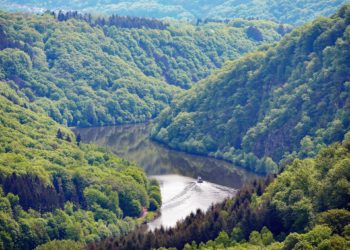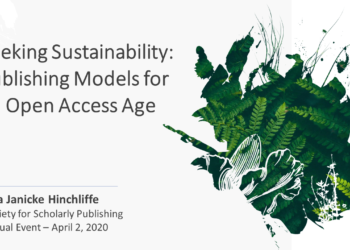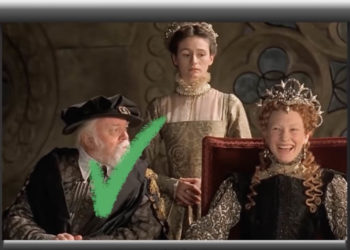As we move through a transition to a fully open research environment, there are challenges for all stakeholders in the ecosystem. Many funders have taken a leadership role in driving this transition, yet even with funder mandates in place for nearly two decades, the transition to open research globally has been slow (Larivière and Sugimoto, 2018).
A recent study led by the Research on Research Institute (Waltman et al., 2021 ) found that commitments to open research and data sharing fell short during the pandemic and that lack of collaboration was a key factor.
On the 10th February 2022, the Society for Scholarly Publishing (SSP) Publisher-Funder Task Force convened a closed forum of funders, publishers, librarians and academics to discuss how collaborating among stakeholder groups may accelerate a transition to open research. The meeting was conducted under the Chatham House Rule, enabling 22 international participants to freely express opinions and ideas without fear of comments being attributed to those present. This multi-stakeholder, collaborative discussion was the second of two such meetings. (Phill Jones wrote about the first of these meetings, entitled “How Do We Make Research Assessment More Responsible? – A Multi-stakeholder Discussion“ in early February in The Scholarly Kitchen.)

The first task was to define what we mean when we use the term “open research.”
For the purpose of the day’s discussion, the definition of open research was taken and adapted from the UNESCO recommendations adopted by the General Conference of UNESCO in November 2021:
…open [research] is an inclusive construct that combines various movements and practices aiming to make multilingual [research] knowledge openly available, accessible and reusable for everyone, to increase [research] collaborations and sharing of information for the benefits of [research] and society, and to open the processes of [research] knowledge creation, evaluation and communication to societal actors beyond the traditional [research] community. It comprises all [research] disciplines and aspects of scholarly practices, including basic and applied sciences, natural and social sciences and the humanities, and it builds on the following key pillars: open [research] knowledge, open [research] infrastructures, [research] communication, open engagement of societal actors and open dialogue with other knowledge systems.
The primary goals of the forum organizers, who committed to grounding their discussion in UNESCO’s core values of equity, fairness, and diversity and inclusion, were to: 1) understand the perspective of different stakeholders, including funders, publishers, researchers, and libraries, across disciplines and geographical regions, and 2 ) identify areas for alignment, collaboration, and collective action to accelerate the transition to open research.
To this end, they discussed these questions:
- Where have funder policies and mandates succeeded as tools for change? What are some of the challenges?
- How might we collaborate to ensure that researchers are able to engage constructively with this transition?
- How might we collaborate to ensure that we are building a truly equitable global system of open research?
- How might we collaborate to ensure a sustainable approach to accelerating the transition to open research, allowing for stakeholders to thrive amidst a culture of openness?
The meeting was introduced by one of the SSP Task Force co-organizers, Chonnettia Jones, Vice-President of Research for Health Research BC. Four of the attendees, one from each stakeholder group, then provided some brief remarks to stimulate conversation. After these “provocations,” a moderator led an open discussion laying the groundwork for breakout groups that would then report back with three to four concrete actions, perhaps even bold actions, that may further accelerate the move to open research among the stakeholders.
The Researcher Perspective:
In the end, all we as stakeholders do is enable and foster research. From a researcher perspective, and indeed from all stakeholder perspectives, a major barrier in the transition to open research is an excessive focus on incentives. Unfortunately, researcher incentives emphasize the agency and responsibility of the individual, generating a permission structure encouraging individuals to act in their own self-interest. Can a collaborative, grassroots approach set in the context of equity across stakeholders enable a move to open research?
The Library Perspective:
Librarians, depending on their role, bring multiple perspectives to supporting open research.. Libraries care deeply about advancing open and equitable scholarship, yet do not have a clear picture of scalable, sustainable models to support the transition. We all want simplicity and sustainability, yet there is ever-increasing complexity in models to support open research. The information management environment itself is complicated. We both live with our current system, and simultaneously are trying to invent new models, and advocate a move to these new models — it is too much to grapple with. The key question here is, how do we achieve simplicity?
The Funder Perspective:
All funders are different, yet funders agree that their goal is to maximize the impact of research funding. Funders are interested in developing strategies that accelerate the pace of discovery. Key to enabling discovery is open sharing of research outputs. Funders find it hard to engage with their researchers on the importance of openness, and promoting grantee compliance with open sharing practices is a struggle. Key tasks for funders going forward are to paint a picture of the benefits of open research to researchers themselves, and to resource and reward the behaviors that lead to open research. Funders are also interested in exploring new models and opportunities for collaboration with other stakeholders. There may be some low-hanging fruit here — for example, publishing standardized acknowledgments and global use of persistent identifiers. Perhaps these sorts of initiatives are stepping stones to a collaborative approach to designing sustainable models that work across all stakeholders.
The Scholarly Society Perspective:
Scholarly societies again come in many shapes and sizes. For many societies, open research highlights “mission conflict.” On the one hand, societies often generate the majority of their revenues from publishing operations, and indeed have a mission to disseminate field-specific content, yet on the other hand, open research for the good of a society’s community is also seen as vital. As the research ecosystem is currently set up, it is not clear how scholarly societies will survive to fulfill their mission; yet for the communities they serve, societies are essential to the health of research and researchers. How can societies find common ground with funders and researchers?
Stakeholder Challenges:
Before breaking into smaller groups, the forum participants identified a number of key challenges and areas to focus on, with the goal of generating specific, actionable ideas. Acknowledging that while it is hard to “fly the plane at the same time as inventing a new and operational plane,” the group agreed that
- Meta-research is needed.
- Sustainable business models must work across stakeholders, bearing in mind a need to move away from incentives that may put them in competition or conflict, especially when corporate commercialism is at odds with community mission.
- A sustainable open research ecosystem must be equitable in design.
- Research evaluation and incentive structures for research funding and publication is at the core of what needs to be addressed.
Core Actions:
Forum participants were split up into groups and tasked with a goal of generating key actions for further discussion and follow-up.
- Ensure an equitable approach to open research, taking care not to put the burden on researchers.
- Develop meta-research projects:
- Develop a research project to investigate how much money there is in the open research ecosystem across stakeholders, and how to track it.
- Develop a research project on the impact and value of open research on the research endeavor.
- Develop a methodology to demonstrate a researcher’s output and impact, incorporating all stakeholder groups.
- Stakeholders should work together to explore collaborations on technical infrastructure. Some examples of low-hanging fruit:
- Work towards standardized funder acknowledgments in journals
- Develop DOIs for grants
- Educate researchers on the broader scholarly communications ecosystem and the benefits of open research:
- Develop a common understanding of persistent identifiers
- Develop cross-stakeholder open research toolkit for communication among stakeholder groups
- Develop an open research training program, linking researchers to funders, institutions, libraries, societies, and publishers.
- Build cross-stakeholder open research advocacy groups, moving away from advocacy from individual stakeholders that may often be in conflict:
- Develop bold experiments
- Incentivize funders to fund open datasets, or an open research program (rather than people or a project), and work directly with scholarly societies.
- Develop core approaches to research evaluation, and researcher incentives that link researchers, funders, institutions and scholarly societies.
- Develop a framework of expectations of researchers beyond the bench – how to understand the research ecosystem.
- Develop a researcher, community-driven open experiment where researchers can add value rather than seek credit
- Develop an experimental program to incentivize and reward new collaborative behaviors, e.g., open research practices, data sharing.
So what’s next?
It is a rare treat to have the opportunity for unfettered discussion with a keen eye on outcomes across funders, libraries, researchers, societies and publishers. In terms of process, bringing together a small group of representatives from stakeholders invested in open research who may engage in conversation protected by the Chatham House Rule worked very well. Our hope is that stakeholders will continue to engage each other in this way, identifying short, medium, and long -term actions to drive accelerating open research. Among the actions identified by this group, we agreed that some actions are achievable in the short term, and some will require a heavy lift. While not all these goals may be achieved, they have been identified, and we can measure our success in future events by looking at progress with such goals.
We hope that this is the beginning of great things to come, encouraging more gatherings across open research community stakeholders.
Acknowledgments:
Particular thanks go to Mary Beth Barilla (SSP Program Director) for enabling and organizing the event. Indeed, thanks should go out to the SSP Funder Task force as a whole, with special reference to co-chair Adrian Stanley and SSP President Alice Meadows.
The organizing committee included Robert Harington, Alison Mudditt, Chonnettia Jones, and Michelle Urberg, all of whom reviewed and provided input to this post.
The opinions and ideas presented in this post should not be attributed to any individual.
Discussion
2 Thoughts on "Accelerating Open Research: A Multi-stakeholder Discussion"
Thank you for writing this piece. It seems the group identified a number of issues and opportunities in supporting the acceleration and sustaining of open research. I’m curious if any Sr. Research Officers took part in these discussions? I can only imagine the perspective they bring to this topic would be fascinating to hear.
Thanks Robert. It’s always great to have more discussion around this topic. For what it’s worth (to you and to TSK readers), I’d like to reiterate the fundamental truth that terms like open and open science mean different things to different people. I know you realize this, but reading the description of your meeting process and outcomes, I get the impression it went something like this: “If open science means x, then our approach to open science should be y.” If this is incorrect, stop reading here. If it is correct, then please accept my following observations in the spirit with which they’re intended—conversation and common enthusiasm for a better open future.
First, UNESCO’s definition is not an accurate starting point for policy because it is filled with ANDs instead of ORs. In truth, open science has many different motives, definitions, methods and end goals. It is far less an “inclusive construct” than a “border object”—a practice that has as many different interpretations and applications as there are researchers.
So, flowing from this, trying to incentivize more and better “open science” is a bridge too far. What’s needed instead is a tighter focus on what we’re actually trying to achieve with open—our common goals if you will—and also more focus on what everyone in this space needs to write their own particular open science success stories, whatever these stories might be.
With regard to our common goals, if we can decide, for example, that we want to work together as a global community to combat climate change, then we can build the data sharing and collaboration tools and systems to do this, and nurture the development of best practices and so on. Without this focus on and attention to producing usable end products, we’re just left with a jumble of overly idealistic good intentions and poorly organized information.
In the meantime, more meetings like yours are important. Ideally, though, these meetings can resist the temptation to use maxims and definitions that are more idealistic than factual as starting points for discussion, or as cornerstones of policy foundations (e.g., BOAI says to do this, etc.). A better approach would be to look at the open landscape for what it is and not as some ideal that needs perfecting—understanding what forms open takes, what people are using it for, what the pros and cons of our current approaches look like, what our many different end goals might be, and so on. From these clear eyed and objective assessments, we can then build our new and improved open policies on more solid ground, better reflecting the diversity and reality of research, and more likely to be useful, widespread and sustainable.



